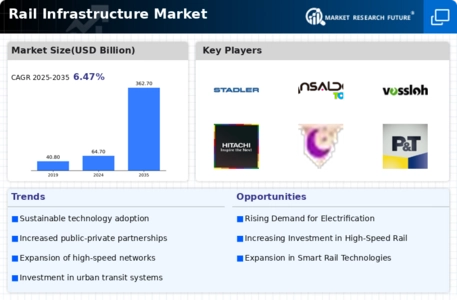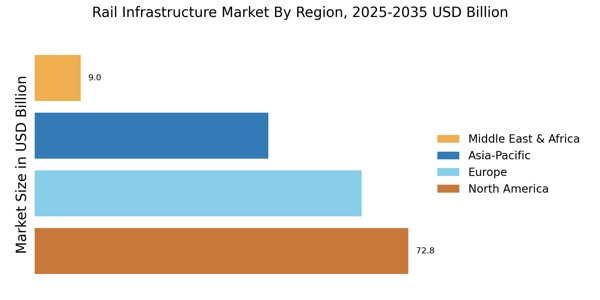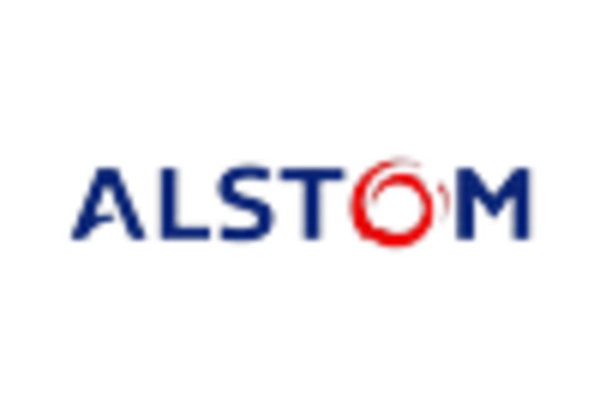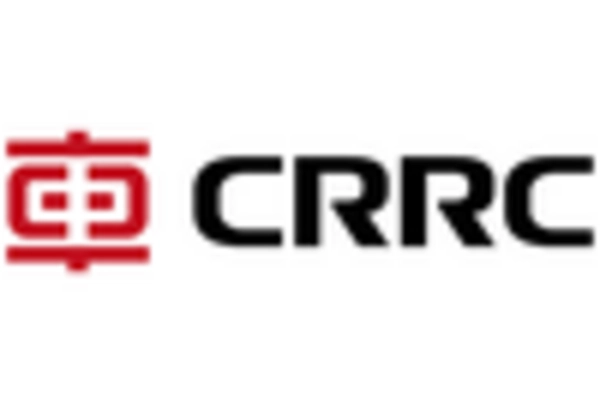Technological Innovations in Rail Systems
The Rail Infrastructure Market is witnessing a wave of technological innovations that are transforming operations and enhancing safety. Advancements such as automated train control systems, predictive maintenance technologies, and smart signaling are becoming increasingly prevalent. These innovations not only improve the efficiency of rail operations but also reduce operational costs. For instance, the implementation of predictive maintenance can decrease downtime by up to 30%, leading to more reliable service. As rail operators adopt these technologies, the Rail Infrastructure Market is expected to see a significant uptick in productivity and safety, making rail transport a more attractive option for both passengers and freight.
Government Policies and Regulatory Support
The Rail Infrastructure Market is heavily influenced by government policies and regulatory frameworks that promote rail transport. Many countries are implementing policies aimed at enhancing rail connectivity and safety, which in turn stimulates investment in rail infrastructure. For example, recent legislation in various regions has allocated substantial funding for rail projects, with some governments committing to doubling their rail budgets over the next decade. This regulatory support not only facilitates the development of new rail lines but also encourages the modernization of existing infrastructure. As such, the Rail Infrastructure Market is expected to thrive under favorable government policies that prioritize rail transport as a key component of national transportation strategies.
Urbanization and Increased Commuter Traffic
The Rail Infrastructure Market is significantly impacted by urbanization trends, which are leading to increased commuter traffic in metropolitan areas. As urban populations grow, the demand for efficient public transport systems rises correspondingly. Rail systems are often viewed as a solution to alleviate congestion and provide reliable transit options. Recent studies indicate that cities investing in rail infrastructure can reduce traffic congestion by up to 30%. This trend is prompting governments to prioritize rail projects, thereby driving growth in the Rail Infrastructure Market. The need for effective urban transport solutions is likely to continue shaping the landscape of rail infrastructure development.
Growing Demand for Sustainable Transportation
The Rail Infrastructure Market is increasingly influenced by the global shift towards sustainable transportation solutions. Rail systems are recognized for their lower carbon emissions compared to road and air transport, making them a preferred choice for environmentally conscious governments and consumers. Recent data indicates that rail transport can reduce greenhouse gas emissions by up to 75% per ton-mile compared to trucking. This growing demand for sustainable options is prompting investments in electrification and the development of energy-efficient trains. As cities and countries strive to meet climate goals, the Rail Infrastructure Market is likely to benefit from policies promoting green transportation initiatives, further enhancing its growth prospects.
Investment in Rail Infrastructure Development
The Rail Infrastructure Market is experiencing a surge in investment as governments and private entities recognize the need for modernized rail systems. In recent years, funding for rail projects has increased significantly, with estimates suggesting that investments could reach over 200 billion dollars by 2026. This influx of capital is primarily directed towards upgrading existing rail lines, enhancing safety measures, and expanding networks to accommodate growing passenger and freight demands. The focus on rail infrastructure development is not only aimed at improving efficiency but also at fostering economic growth by creating jobs and stimulating local economies. As such, the Rail Infrastructure Market is poised for substantial growth, driven by these investments.


















Leave a Comment